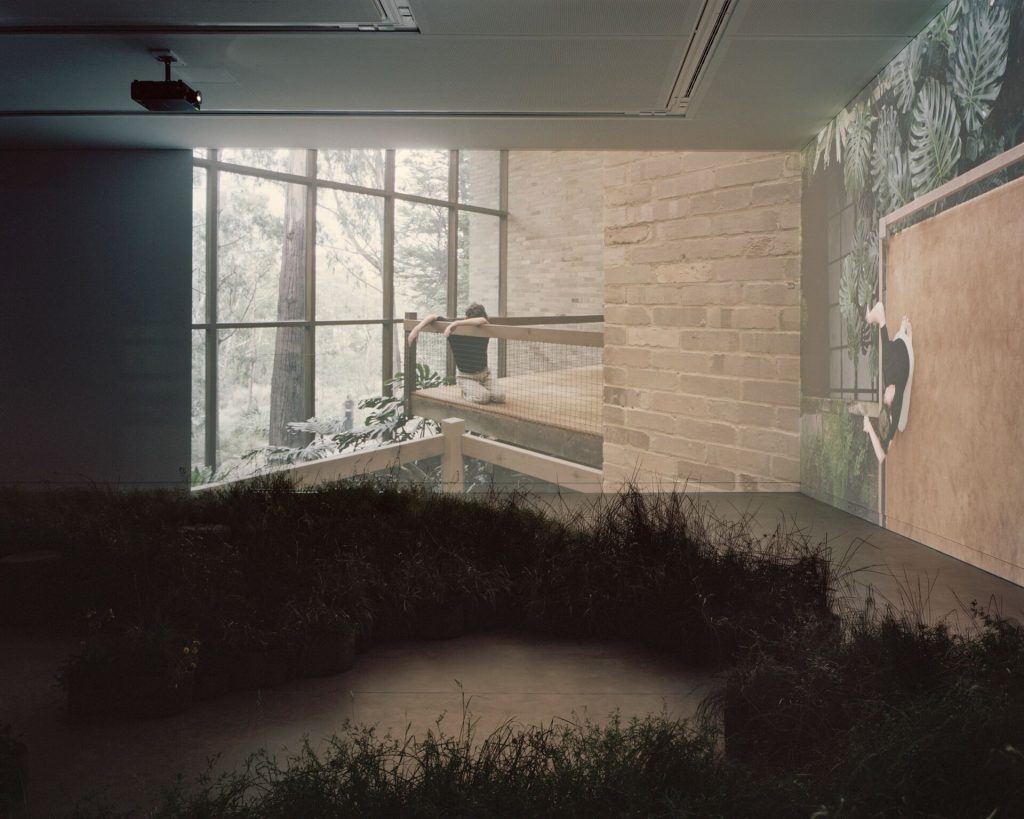
The Australia Pavilion at the La Biennale di Venezia
The Australia Pavilion at the Sixteenth International Architecture Exhibition – La Biennale di Venezia has seen 10,000 plants become part of a multi-sensory living installation.
Repair, by creative directors Mauro Baracco and Louise Wright of Baracco+Wright Architects in collaboration with artist Linda Tegg, considers the impact of built environments on natural systems.
Installed both inside and outside the pavilion, the plants include 65 species from the Western Plains Grasslands. Just one percent of these threatened species remain in their native ecosystem, and their presence in the installation serves as a poignant reminder of the consequences of occupying land. By transforming the pavilion into a living field of vegetation, the curators have created a space where visitors can experience the relationship between architecture and the living environment. ‘The use of land for buildings is no small act’, say Mauro Baracco and Louise Wright, ‘there is a role for architecture to actively engage with the places it is part of: the soil, hydrology, habitat, microorganisms and so on’.
Creating a physical dialogue between built and natural environment, Repair begins a conversation about the role of architecture and the kind of strategic and creative cross-disciplinary approach that will be necessary for architecture to play a role in restoration. While Australia’s buildings and cities have tended to separate people from nature, Repair envisions a future where a sustainable relationship between buildings and nature is the first step in enacting wider social, economic and cultural repair.
This ambitious and far-reaching vision responds to the theme Freespace of the Biennale Architettura 2018, set by the exhibition curators Yvonne Farrell and Shelley McNamara. Freespace ‘provides the opportunity to emphasise nature’s free gifts of light – sunlight and moonlight, air, gravity, materials – natural and man-made resources. [It] encourages reviewing ways of thinking, new ways of seeing the world, of inventing solutions where architecture provides for the well being and dignity of each citizen of this fragile planet.’
Recognising the depth of thinking and expertise that such an approach requires, the creative directors were supported by a multidisciplinary team, including architect and anthropologist Paul Memmott, landscape architect Chris Sawyer, landscape architect and urban designer Tim O’Loan, ecologist David Freudenberger, curatorial advisor Catherine Murphy, and architects Lance van Maanen and Jonathan Ware. Bringing together architecture, landscape architecture, urban design and ecology, as well as Australian Indigenous culture and understanding, the team typified the complexity of working in Australia, one of the most diverse, ecologically and culturally sensitive sites in the world.
Alongside the grasslands, the pavilion also houses a lighting installation, Skylight, and an experimental video series titled Ground. Featuring 15 Australian projects that ‘unpack diverse iterations of repair’, Ground will be projected inside the pavilion, which is lit internally by Skylight. The installation simulates the sun’s rays with energy from the Italian electricity grid comprising of 64 percent fossil-generated electricity, 21 percent hydro, nine percent wind and solar, five percent nuclear and one percent geothermal, allowing the grasses to survive inside.
This year’s Australian pavilion not only challenges us to re-think architecture and our role in the living ecosystem, it provides a real example of this scope of thinking in action. Cultivating the 10,000 native West-Australian grasses and transporting them to Italy is both an act of conservation and of displacement, a paradox that highlights the complexities and creative opportunities within the task of coexisting with our environment and beginning to repair the damage done.
























